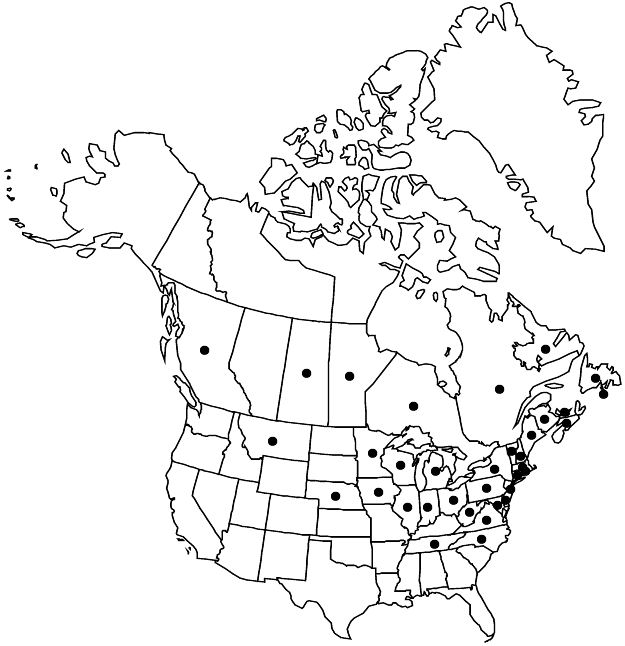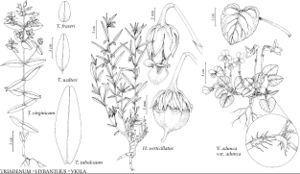Triadenum fraseri
Phytologia 2: 289. 1947.
Herbs erect, 1.5–7.5 dm, sometimes with ascending branches in distal 1/2+. Stems shallowly 4-lined at first, then terete. Leaves sessile, sometimes amplexicaul; blade broadly ovate or triangular-ovate to oblong, 15–50(–70) × 10–40(–50) mm, base usually ± shallowly cordate, rarely truncate, apex rounded to retuse, gland dots laminar (relatively dense) and intramarginal.
Phenology: Flowering late summer–early fall (Jul–Sep).
Habitat: Wooded swamps, fens, marshes, lakeshores, organic to silty and sandy substrates, along shores, beaver meadows, poor fens (rarely in true bogs)
Elevation: 0–500 m
Distribution

St. Pierre and Miquelon, B.C., Man., N.B., Nfld. and Labr., N.S., Ont., P.E.I., Que., Sask., Conn., Del., Ill., Ind., Iowa, Maine, Md., Mass., Mich., Minn., Mont., Nebr., N.H., N.J., N.Y., N.C., Ohio, Pa., R.I., Tenn., Vt., Va., W.Va., Wis.
Discussion
According to B. Boivin (1967), Triadenum fraseri (as Hypericum virginicum) was introduced into British Columbia from eastern Canada in peat. It seems to be almost always distinguishable from T. virginicum and to have a distinct habitat; it merits specific rank.
Selected References
None.
